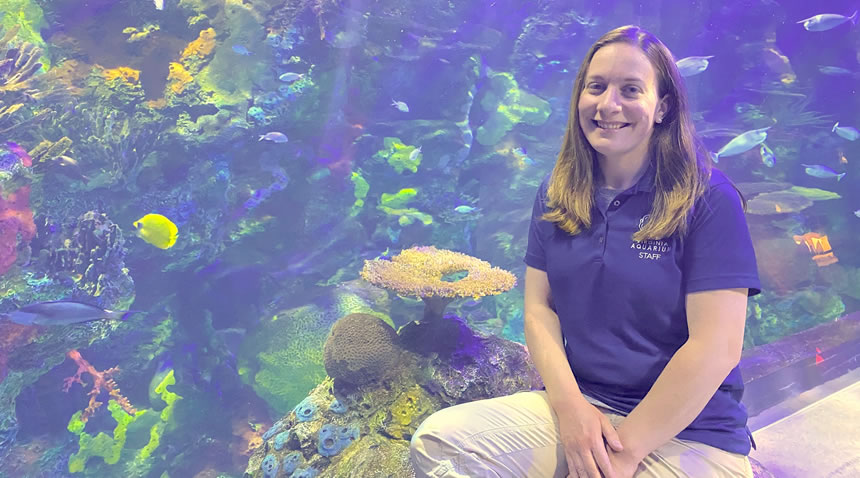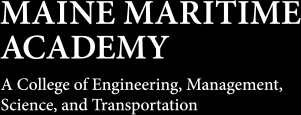Underwater Matters
I AM A 2006 GRADUATE of the Corning School of Ocean Studies at MMA and have my B.S. in Marine Biology. I currently work as an aquarist at the Virginia Aquarium & Marine Science Center, where I specialize in the husbandry of marine and freshwater fish, elasmobranchs (sharks and rays), aquatic turtles, and invertebrates.
The aquarium has some 800,000 gallons of fresh and saltwater displays. The largest is the shark tank, about 200,000 gallons with a variety of species, most of which are local. We have thousands of animals representing more than 200 species.
My daily work includes care for all of our marine and freshwater fish, invertebrates, sea turtles, freshwater aquatic turtles, and our stingrays and sharks as well. That includes tasks such as diet preparation and feeding, behavioral training that we do for some of the animals, exhibit and holding maintenance, diving, medical procedures, and providing enrichment for animals.
Diets are carefully managed for each animal—we consider weight, calorie count, composition, nutrient supplements, or vitamins that need to be added into the food. The exhibits need to be maintained, and filtration components checked and fixed when necessary. Water quality is tested and adjusted regularly. We keep immaculate records.

Of all the animals, my favorite are our six spotted eagle stingrays. I’ve been here since they arrived in 2008 and helped train them from the beginning. I helped teach them how to accept hand-feeding and come up and respond to a target. I also had to condition them to being handled so that veterinary procedures are much less stressful for them. Overall, they’re calmer than they used to be. Each has its individual mannerisms and they have become special to me.
Aside from caring for the animals, the most important thing we do is conservation education. We are able to share all of these animals with the public, up close and personal. They get to interact with them, and it creates a connection they wouldn’t get from seeing an aquatic animal on TV or in a book.
Once they have that connection, we can talk to them and say, perhaps, “Hey, these are some of the things that are problems for aquatic ecosystems, and here are the little steps that maybe you could do at home to help.”
I feel the work we do has an impact. A child I interact with may grow up to become a scientist who goes into conservation or otherwise makes a difference for our environment. That’s the feel-good sensation I often have at the end of the day.█
—By Katie Stines ’06
Photo: Courtesy of Katie Stines




Post Comment
Comments are moderated and will be reviewed prior to posting online. Please be aware that when you submit a comment, you agree to the following rules:
Maine Maritime Academy reserves the right to delete any comment that does not comply with these guidelines and is not responsible or liable in any way for comments posted by its users. If you have a message for the editor, please email mariner@mma.edu.
Class Notes
View All >Read More